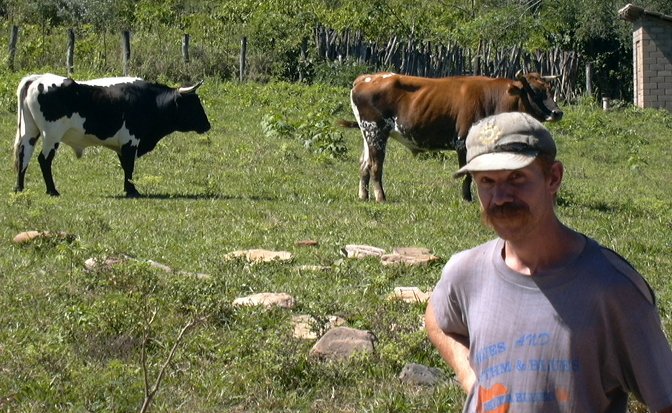

Many years ago I worked for Habitat for Humanity in Bolivia. Habitat volunteers are referred to as ‘partners’. We felt there was no very good Spanish equivalent for this word. Socio was too business-like. I don’t remember why we rejected compañero: perhaps it wasn’t business-like enough, or maybe it just had too many syllables. Anyway, the word we finally hit on (though I don’t think we ever used it officially) was yunta.
yunta [ yoon • tuh ]
< Spanish, from the Latin iunctus (united, connected, joined together) >
- yoke (e.g. for oxen);
- pair of oxen, mules, or other animals used in farm labor;
- (South American, informal) (of people) team: forman una buena yunta they make a good team;
- (South American, informal) (of people) partner: es su yunta del ministro he’s the Secretary’s sidekick.
Like many native American languages, Quechua has fewer words than English or Spanish, but it compensates by making its words more powerful and poetic. When Quechua-speakers borrowed yunta from Spanish, it came to mean something like “that thing which cannot function without this other thing”: a yunta with just one ox wouldn’t be a yunta.
This concept was powerful enough that I decided to title the second book I never wrote “La yunta”. I’d intended it to be a collection of about eighty very short stories reflecting on my experiences and what I’d learned in my seven years with Habitat. I meant it to be for and about my Bolivian partners; calling it “La yunta” was supposed to emphasize what we’d all managed to accomplish working together.
Some time after it became clear I was never going to finish that little
book it occurred to me I could still use the title for something else,
hence yunta.org. I had no idea at that point that I’d be
going back to Bolivia to promote animal traction (horses, mules, donkeys,
and oxen) in Chuquisaca. By the way, there is no org —
it’s just me. I could have gotten .com or even
.edu, but they seemed less appropriate.

Only known photo of my ox team. They were an ill-behaved pair: the black one taught the red one how to bust into people’s gardens, and unfortunately he proved very adept. The day after this picture was taken the community decided to sell them (for me); they were probably someone’s lunch that same week. (photo: Stan Reed)
yunta.html; revised 24 August 2011
copyleft 2011 James Gosselink